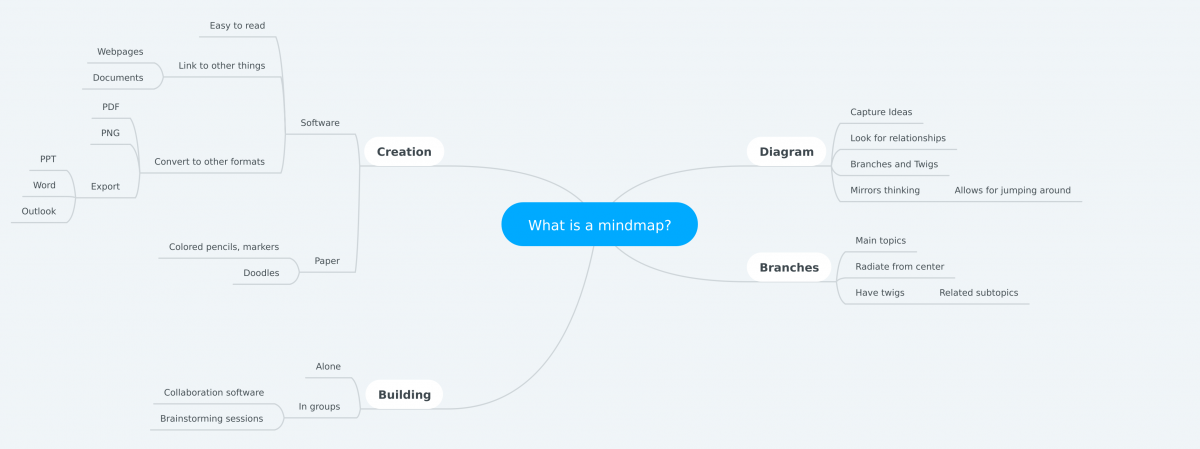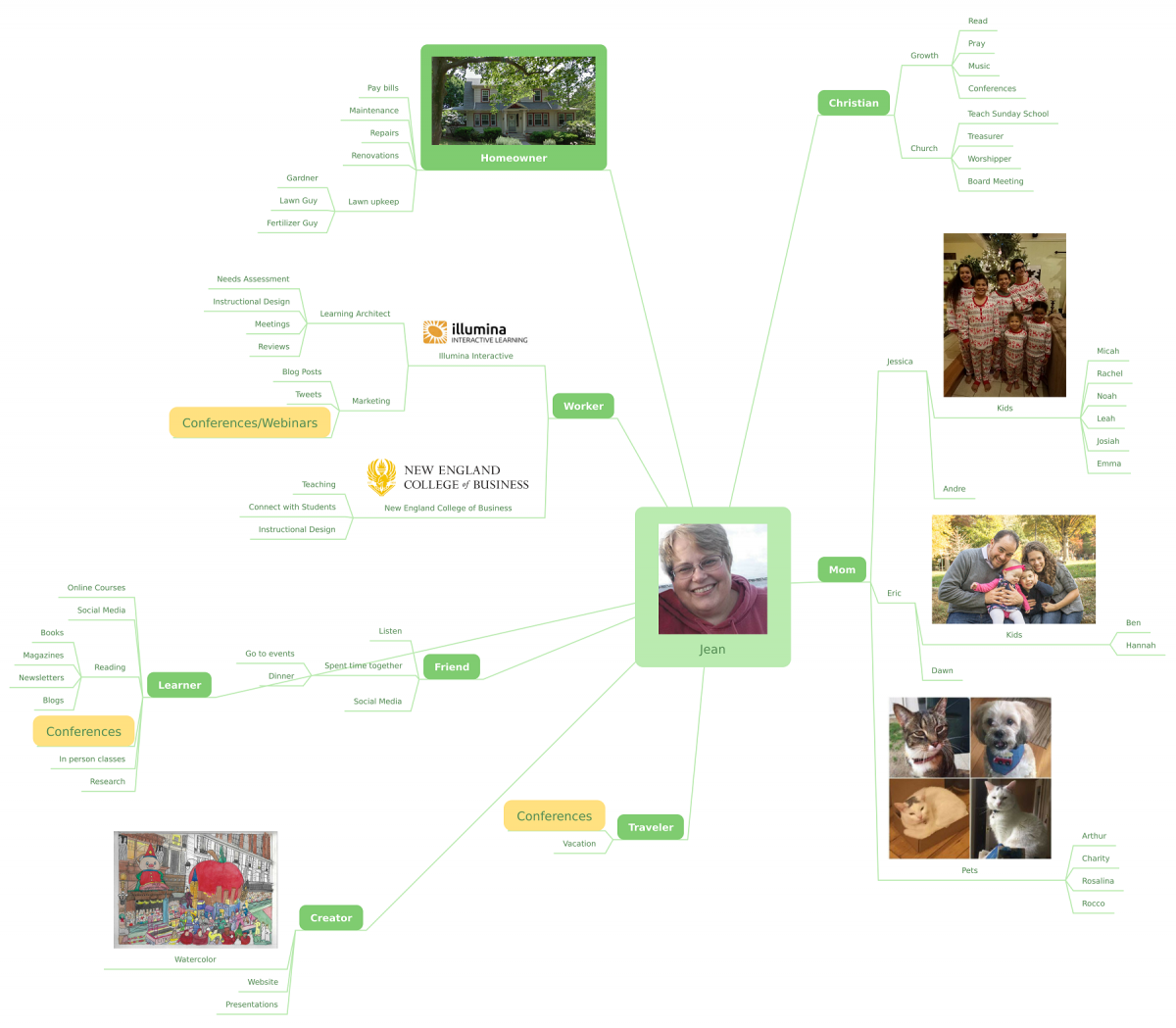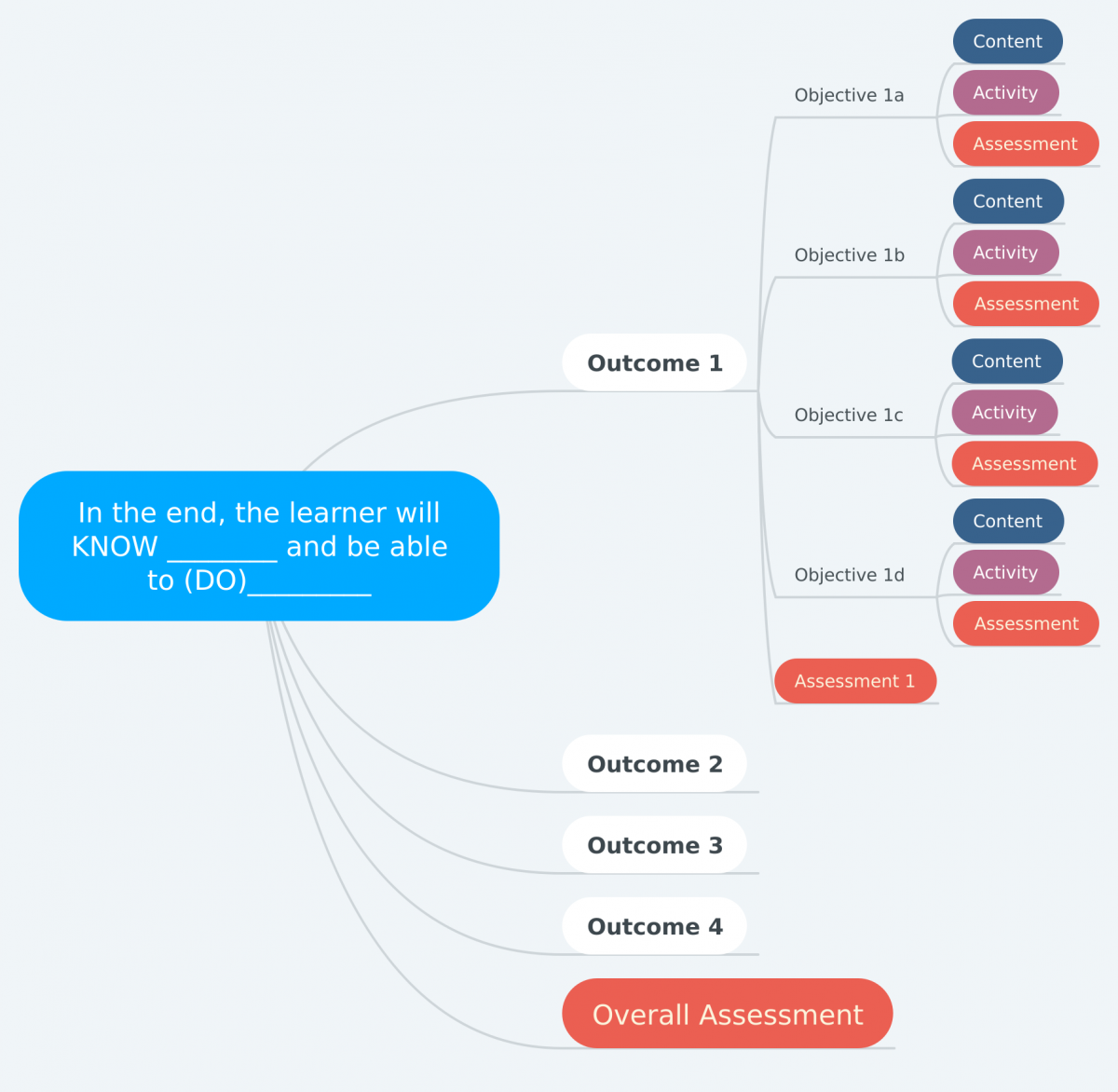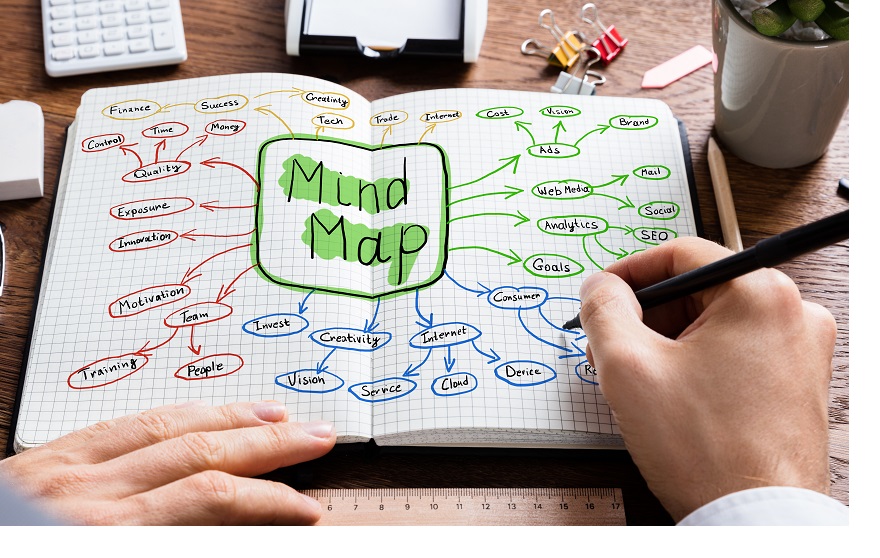Mind Mapping for Better Instructional Design
What if there was a better way?
Posted by Jean Marrapodi on Thu, 07/12/2018 – 10:36
Have you ever sat before a project that seemed too big to conquer? An event to plan? A committee with more ideas than action? A massive collection of content that you need to distill into a short eLearning course? An overwhelming problem you don’t know how to solve?
What if there was a way to tackle those challenges that encapsulated the work into an actionable plan? There is! Let’s see how you can…

Mind Mapping 101
Mind mapping is a diagramming technique popularized by Tony Buzan in the 1970s. It is the process of visualizing your thinking that leverages the randomized way thoughts flow. According to Buzan’s website,
A Mind Map is a powerful graphic technique which provides a universal key to unlock the potential of the brain. It harnesses the full range of cortical skills – word, image, number, logic, rhythm, colour and spatial awareness – in a single, uniquely powerful manner. In so doing, it gives you the freedom to roam the infinite expanses of your brain. A Mind Map can be applied to every aspect of life where improved learning and clearer thinking will enhance human performance.
Mind maps are simple diagrams that begin with a central concept, with the main ideas radiating around it acting as branches. Related thoughts are added to each branch as twigs, and are captured as words or phrases. Mind maps are read like a clock, beginning at 1:00, and moving clockwise around the branches. The example below demonstrates what a mind map is and how one is created.

The power of mind maps comes in the building of them. Try this experiment to learn the technique.
Mind Map YOU
A good way to learn mind mapping is to create a mindmap about yourself. Take a sheet of paper and write your name, or just “me” in the center and draw a circle around it. Then draw branches radiating from that circle identifying the roles you have in your life. They might include things like worker, parent, student and spouse. A mind mapping purist would advocate using different colors for each spoke, but using the pen or pencil in your hand is just fine.
Now pick one of those branches and add the aspects of that role. If you chose parent, you could add a twig for each child, and off of that twig, add the different roles you play in caring for and loving that child. You will likely find as you work on the different branches, thoughts related to a different branch will come. That’s fine. Add them to that branch. A key to mind mapping is that sequence doesn’t matter. Capturing ideas is what is important. Think about your thinking as you are working through this process. Notice what triggers thoughts.
If you were using software, you could add photographs. With a paper and pencil or pen, you can add doodles if you like. Here is a simple mind map I created about myself (you can click on it for a close up).

Look for Connections
Once you have collected enough information, step back and examine the mind map and look for connections. One connection I realized as I was building mine was conferences appeared in multiple branches. Conference presentations allow me to enjoy traveling, creativity, learning, and socializing with my peers. Look at your map. What connections do you see? You may also find that this triggers other ideas for segments of the branches you may have missed. That’s fine! That’s how the brain works. Visualizing your thoughts this way allows you to aggregate a lot of information and see your ideas in different ways.
Using Mind Mapping in Course Development
There’s lots of research out there about how mind maps foster creativity, improve presentations, and build deeper learning, so you might consider using them with your learners in the courses you write. In our work as designers, there are many applications for it. We can use mind mapping on our own, or in groups. We can document the thoughts during a brainstorm, capture the minutes of a meeting, plan a presentation, or aggregate the content of a course.
Mind Mapping During Needs Assessment
When I do a needs assessment, I try to gather all the key stakeholders in a room, and capture their thoughts in a brainstorming session. I put the topic in the center, and write the 5Ws and an H around it: who, what, when, where, why and how. I ask these basic questions, then build from there:
- Who needs this training?
- What do they need to know and do?
- When do they need to know and do it?
- Where do they need to know and do it?
- Why do they need to know and do it?
- How do they need to know and do it?
During this conversation, we uncover who the users are, trying to define a persona of the user group taking the training. I work to generate the high level goal statement for the course expressed as a single sentence: In the end, the users need to know and be able to (do) . We also work to determine where and when the users will be using what they learn, get to the business rationale for the training, then to the nuts and bolts of what they will actually be doing. This kind of framework visualizes what needs to be developed.
Organizing the Content
I use mind mapping to build from the goal statement, generating the outcomes and objectives of the course. From there, I determine the assessments, then I add in the content and the activities I will use to meet each outcome. Mind mapping lets me link all of the pieces to ensure what I’ve planned works toward meeting the goal of the project. This is key to ensuring that our courses work to improve performance. When we start with the content, we may miss the intention of the course.

Planning the Project
Mind mapping can be used for planning out a project. Start with the project name in the center, then draw out the branches of the milestones or main segments of the project. Add twigs for the tasks, then attach the task owner and due date to each task. You could use a similar process for generating the project charter, validating requirements, or even mapping out the budget. Some of the paid mapping software allows you to export this map into Microsoft Project and will assign the tasks to Outlook or Trello or even bounce between the map view and a Gantt chart.
Software or Created on Paper?

Mind mapping purists will say that the only way to create a map is with multiple colors and on paper. Using paper or a whiteboard in a conference room allows for spontaneous work, and creativity through doodles and drawings on the different branches. Paper is available any time, anywhere, and is free. If your goal is to work a plan out, then paper will serve the purpose. Tip! If you’ve done a group mind map, take a snapshot of the whiteboard to capture your data. If you plan to use the map for other things, you may want to consider the advantages of software.
Mind mapping using software allows the information to be transposed into other formats. Maps can be exported to images, like the ones included here, as well as PDFs, and some software will convert maps to outlines in Word, the basis of slides in Powerpoint, tasks in Trello or Outlook, and some will convert to a project plan or Gantt chart. Many have a feature that allows them to be presented, branch by branch as you might do with a projector. Be aware that mind maps can become very large, and printing can generate microscopic formats or multipage posters that need to be taped together to be of any value. They tend to be best viewed online.
For people like me who are online all the time, I think with my keyboard, so I don’t lose any time mapping online. Software allows for a variety of formatting options and the application of templates for style, and many base examples to get you thinking about how to structure yours to meet your goal. Mind mapping software uses Enter and TAB to enable rapid thinking and quick building out of branches. They generally have a very short learning curve. On the downside, software usually has a price tag. There are free mind mapping software products, many with paid subscription upgrades for more features, some with links to apps that allow bouncing between a mobile device and computer. A good example in this group is XMind, whose recent release of XMind Zen has an iOS-Desktop integration. There are client-server products that work well behind a firewall, but they come with a steeper price tag. These allow for optional publication to the cloud. Mindjet’s Mindmanager is loaded with features and even has an enterprise edition. My favorite, Mindmeister, creates online maps and allows for sharing and collaboration so even a virtual team can work together on a map in real time or asynchronously. Some of the software you may already be using has a mind mapping option built into it. SmartDraw, Visio and Lucidchart are three examples. Personally, I find mapping in these a little clunky, but they are in there if you’d like to try it out before investing in another product. Generally, all of the products have a free trial period you can use for experimentation before you buy it.
Lots of Uses. Which Will You Try?
We started out asking if there was a better way. Mind mapping is one way to work through organizing chaos. Is it the silver bullet to solve all of your design problems? No. But it sure is a good way to start. Dive deeper into mind mapping and let us know what you discover.



